For many people lumber pricing is a mystery. It varies widely from once supplier to another, one week to the next, and even within the same species. So many variables are in play and questions that have to be asked. Board foot or lineal foot? Widths, Thickness, and Length requirements? Specific grade or grain pattern? Delivery or pickup? Milling or moulding needed? All of these elements make for a complicated playing field that means standardization is impossible which in turn leads to feelings of frustration on the buyer’s part.
“I’m getting hosed!”
…is a common sentiment among contractors, manufacturers, and retail lumber yards when referring to the lumber wholesaler! We hate to see this sentiment and want to be as transparent as possible so as to educate our customers on the best time and way to buy. Let’s look at a specific example as an illustration. Since summer decking season is here, Ipe is a prime example as a very popular decking material.
Cost of Ipe Decking is Seasonal
Joe works for a large luxury home builder. His designs use a lot of decking. His customers demand only the best so Ipe is a clear choice for appearance, stability, and low maintenance. Joe has a current project that calls for a multi-level 2500 square foot deck. He finds J. Gibson McIlvain on Google and calls us to supply the Ipe. Joe tells us the sizes he needs to build his deck design and we consult our inventory to find the best match for his requirements. It is early June and our inventory is very high. We are easily able to match the sizes and pieces and we can take our pick from many different packs from many different Brazilian suppliers. Each one of those packs from Brazil has a cost associated with it and with our large inventory we can find the best balance between sizes needed and cheapest cost. We pass this savings along to Joe. However because the overall size of the order isn’t too big, we have to “break” 5-15 packs to pull out the pieces for Joe’s order. This adds labor and processing time as well as the fact that the more the lumber is handled, the more chance for damage. So Joe’s price increases a bit to cover this overheard cost.
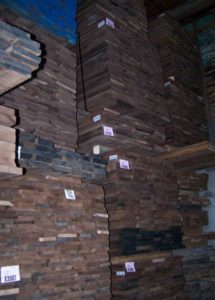
We quote a price for Joe and during our conversation we learn that Joe uses Ipe for most of his projects and will build 4 to 5 big houses each summer with it. Armed with this information we quote Joe a lower price if he buys enough Ipe so that we don’t break the packs. This decreases our overhead handling and we can reduce costs while also getting Joe enough material for all his summer projects at the existing prices. Joe chooses to decline the larger order stating that he cannot afford to tie up that much capital at one time. This is a common issue so we thank Joe but also tell him that the prices will continue to climb as the season ages driven not only by shrinking supply, but also rising costs for the material to us. Additionally, the smaller orders will continue to bear overhead costs.
The following month Joe calls us again but this time he has 3 simultaneous projects he needs to supply and is requesting 15,000 lineal feet of Ipe. This is an order we can fill quickly without breaking packs so the pricing will be lower due to lack of overhead. However when we consult our inventory, we discover that all of the cheaper cost material has now been sold and what is left has a higher price tag on it. Additionally, many of our full packs have been broken filling orders for other customers just like Joe’s first order. Now instead of being able to pull full packs for Joe, we have to piece them together from “leftovers” thereby increasing the labor costs again. Joe is dismayed when he receives his final price per linear foot at how much it has risen despite the larger size of his order. Once again the “I’m getting hosed” sentiment rears it’s head. Joe likes the quality of the material and the service he got from us so he places the order but he cannot shake the suspicion that he is being taken for a ride on price.
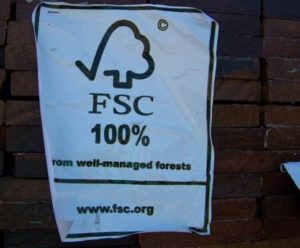
As I said above, each pack of lumber that comes to us from Brazil has a cost associated with it. This will change from supplier to supplier and shipping container. Additionally as the buying season wears on and supplies dwindle the prices go up for us. In the situation above with Joe he is buying early in the season and our larger inventory allows us to find the inventory with the lowest associated cost. When Joe comes back to us, even though we still have plenty of inventory and can easily fill the order, our costs have risen along with his cost. In most cases we make the same profit and sometimes even less.
The Ipe example is one that is driven by availability due to rainy seasons, but also by sheer demand worldwide. This is only one scenario and it may be a different story for a different species, but the fundamentals remain. We will do our best to find the lowest cost material for your order, but there are so many factors that go into pricing that your price one week will almost certainly be different the following week. With every order we work to find efficiencies in fulfillment that can translate to a “deal” for our customers and I hope that this peek behind the curtain of our business will help to eliminate that “I’m being hosed” perception.

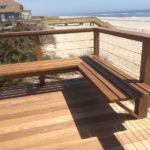

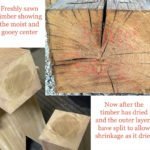
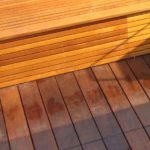
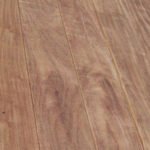
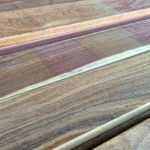


Are you folks related to Bob McIlvain of the Downingtown PA clan? I attended a Philadelphia school with Robert many years ago. Also was a member of the same Friends Meeting. Love your approach using transparent ‘marketing.’ Having been in busy myself, I always found it frustrating making every effort to treat my clients and customers fairly but through a lack of understanding of our processes they felt we were mistreating them.
Yes Jeff, Bob is the second cousin of our President, Gib McIlvain. I appreciate your kind words. I am a firm believer in educating customers and pulling back the curtain to show them how it all works. The more we all know about each other the better we can help each other.
So today is November 5th. We are about to make the decision for decking on a house we are building on the northern Gulf coast in Florida. People who previously built around us are suggesting Ipe or Cumaru for our project. After reading some of your informative postings, it would seem we are catching the annual cycle at exactly the wrong time, and will likely see the highest prices of the year.
Is this a valid observation? What are the factors?
Are there considerations we should be mulling over, to make the Cumaru vs Ipe decision at this time? The actual install will likely take place in the next six weeks or less.
Thanks for any assistance you can give.
First as far as Ipe vs Cumaru, in your area either will server you really well. Ipe is more stable than Cumaru (slightly) but in humid climates either species will perform really well. It is in the dry, desert climes that you need to be picky with your species and choose a thicker board that can resist some of the unequal heating and cooling of a deck. But that is not your situation so honestly make your decision based on availability and/or price. The appearance is similar enough in both species that it may not be a deciding factor. Let the client dictate that since either way you should be covered.
As far as the buying cycle…things have changed a little in that we are buying across a wider geographic range and able to dodge some of the rainy season limitations. This means that there is a more consistent supply year around. HOWEVER…we are a bit of an anomaly due to the volume of material we import and our diverse import base so we can exercise a measure of cost control year around. Others may not be able to do that and certainly supplier downstream from us who are not maintaining such a large, on the ground inventory, will be more subject to seasonal price fluctuations.